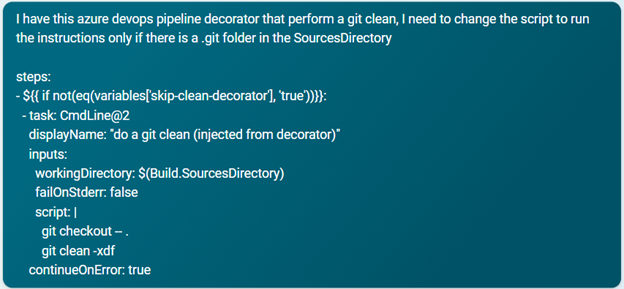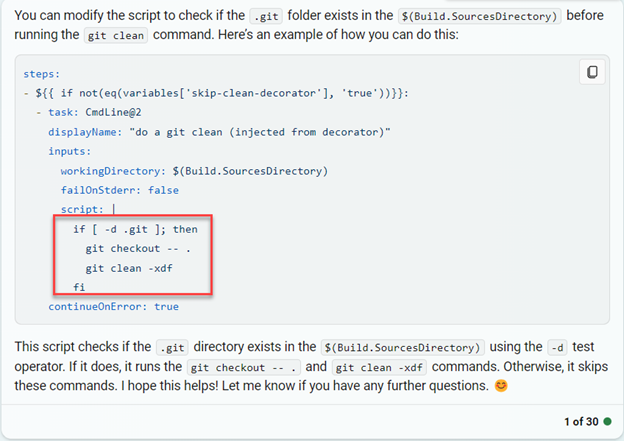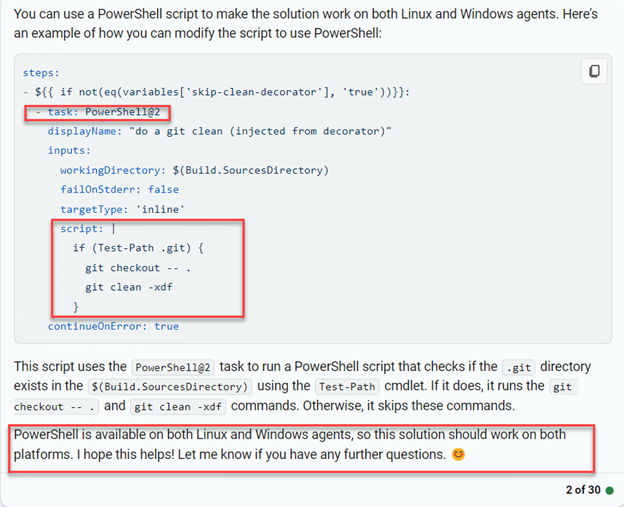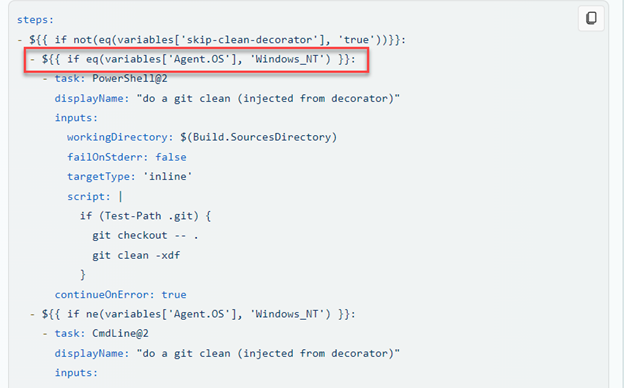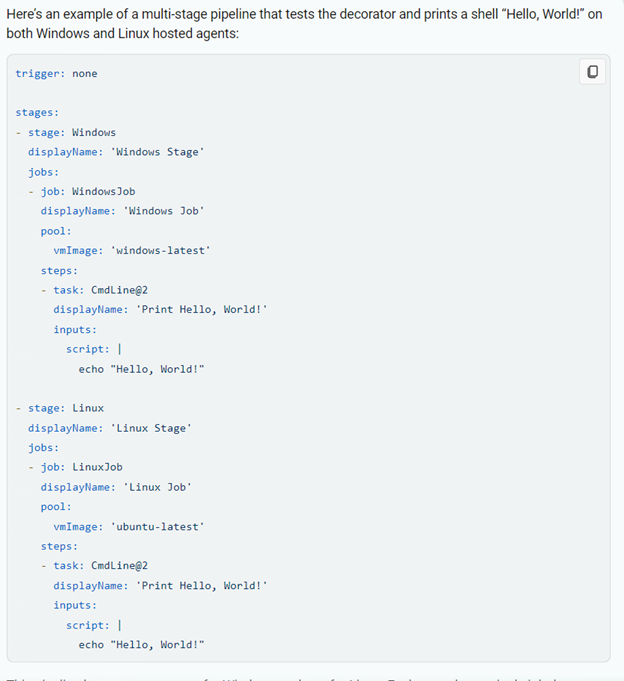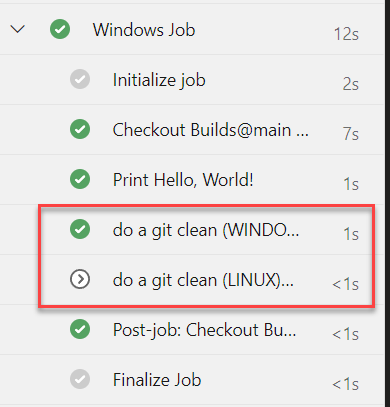Modifying Azure DevOps Pipeline Decorators with Bing Chatbot Assistance
Learn how to efficiently modify Azure DevOps pipeline decorators using Bing Chatbot and overcome common challenges.
In the past, I’ve discussed using pipeline decorators to clean up build folders. Recently, I faced a challenge where I needed to modify my decorator to run only if there was a .git folder. To save time, I used Bing Chatbot, which leverages GPT powerful LLM and can search the internet to find latest contents, making this kind of problem-solving a breeze.
Figure 1: sample prompt asking to modify a piece of an Azure Devops pipeline
This kind of problem are perfect for the AI because I have an example and I can give a clear description of what I want to be changed. Bing quickly provided a solution; however, it assumed the script section was written in BASH. This required a more detailed request to make the solution work on both Linux and Windows.
Figure 2: Answer from bing, it is correct but it assumes that script section is written in BASH
Since we have a chat, bing does not lose its context, and I can refine my request to make it work on both Linux and Windows.
Figure 3: I’m asking bing to change the answer
After refining my request, Bing provided a cross-platform solution. The chatbot checked for PowerShell availability on both Linux and Windows agents and adjusted the script accordingly.
Figure 4: Bing fixed the solution to work cross OS
However, I had a unique situation where some custom-deployed Linux agents might not have PowerShell core installed. I then asked Bing for a conditional pipeline decorator that would run different tasks based on the operating system.
Figure 5: I further ask to change the solution; I want to change the code based on the OS
The whole conversation is like giving task to a junior programmer, wait for the solution and refine the request until the solution is correct. The whole process is very natural. Again Bing provided a solution, but it proved to be incorrect.
Figure 6: The solution is wrong, but it seems good at a first glance.
If you have great experience in Azure Devops pipeline you can immediately spot that the use of template expansion is wrong. Template expansion syntaxt happens when the pipeline is instantiated, long before any agent was chosen. At that stage, the Agent.OS variable is still empty because we are not running in any agent.
Lets suppose that you did not immediately found the error, you can simply ask bing to generate a simple pipeline definition that runs a simple task on Linux and Windows agent so you can test your new decorator. Few seconds and you have a perfectly working solution.
Figure 7: Et voilà, a sample pipeline was created.
Now you can run the pipeline and indeed verify that the solution is wrong, actually despite the OS of the agent only the Linux task is executed. This is because the template expansion happens before the agent is chosen, so the Agent.OS variable is empty and the condition of Linux task is always true.
This is somewhat a limit of LLMs, when the task is really complex it can fail. This can be due to various situations:
- Bing did not found an example online that mached perfectly my request, so the solution is based on the existing example
- My original example already has a condition for template expansion, the fact that the
Agent.OSvariable is not available is a really too complex concept - The overall subject (azure Pipelines) is complex and we have really tons of options
To solve the issue, I search for documentation and I referred to the Microsoft documentation that has a section dedicated to run tasks based on OS version. I needed to use the condition property of the task because that condition is evaluated at agent run time, when the OS is known.
| |
Now I re-run test pipeline and indeed the decorator works as expected.
Figure 8: Pipeline decorator now works as expected.
Conclusion
Bing Chatbot efficiently analyzed my script and provided a solution for a cross-platform pipeline decorator. It worked perfectly and gave me a perfectly fine solution (the one that uses PowerShell because it indeed found that linux agent usually have PowerShell core installed), but then started to allucinate when I asked for a more specific and uncommon situation. The overall experience demonstrated that Bing Chatbot is an excellent tool for quickly solving well-documented tasks. However, it may struggle with more complex or uncommon situations.
Gian Maria.

